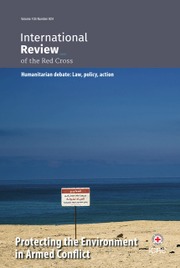The proper management and identification of individuals who have died due to armed conflict, violence, disasters or migration is essential to upholding their dignity and providing closure for their families. International and domestic laws impose obligations to respect and handle the dead appropriately, as failure to do so can increase the number of unaccounted-for individuals and prolong the suffering of their loved ones.
International humanitarian law (IHL) governs the treatment of the dead in armed conflicts, requiring their dignity to be protected and their remains to be searched for, collected and evacuated. This aligns with broader humanitarian concerns present in international human rights law and international disaster response law, which also aim to ensure proper handling of the deceased and clarification of the fate of missing persons in various circumstances.
Application of relevant IHL provisions
Obligation to search for, collect and evacuate the dead
Whenever circumstances permit, every party to conflict must take all possible measures to search for, collect and evacuate the dead without adverse distinction.Footnote 1
Treatment of the dead
Parties to an armed conflict must take all possible measures to prevent despoilment of the dead.Footnote 2
Identification
Parties to an armed conflict must record all available information before disposing of the dead, with a view to identifying those dead bodies or human remains at a later date.Footnote 3
Return of human remains and personal effects
Parties to an armed conflict must endeavour to facilitate the return of the remains of the deceased, along with their personal effects, upon request.Footnote 4
Wills
Detaining Powers in international armed conflicts (IACs) must facilitate the execution and authentication of the wills of prisoners of war (PoWs) and of civilian internees.Footnote 5
Burial and cremation
The dead must be disposed of in a respectful manner.Footnote 6 Parties to an IAC have additional obligations concerning deceased members of the armed forces.Footnote 7
Collective graves
Parties must ensure that bodies are buried or cremated individually.Footnote 8
Lists of graves
Each party shall organize an official Graves Registration Service, and these Services shall exchange lists detailing the exact locations and markings of graves, together with particulars of the dead interred therein.Footnote 9
Marking, respecting and maintaining graves
Parties to the conflict shall ensure that graves are respected, properly maintained and marked.Footnote 10
Exhumations
Exhumation shall be permitted only when the States concerned have concluded an agreement to facilitate the return of the remains of the deceased and of personal effects to the home country, or when exhumation is a matter of overriding public necessity.Footnote 11
Death in detention
In IACs, every death of a PoW or civilian internee must be followed by an official enquiry by the Detaining Power, which must take all necessary measures to prosecute those responsible as appropriate.Footnote 12
Domestic implementation
States have an obligation to adopt measures for implementing IHL domestically, including measures related to respect for the dead. Such measures must be taken in both peacetime and wartime.Footnote 13
ICRC support
The International Committee of the Red Cross (ICRC) works to protect individuals during armed conflicts and other crises and helps to clarify the fate of missing persons by, inter alia, supporting proper treatment of the dead, and their identification. It provides guidance and training to authorities and forensic experts to strengthen local capacities using scientific best practices. Additionally, the ICRC Advisory Service on IHL advises and assists States in implementing IHL and other relevant norms domestically. In this regard, the ICRC has drafted its Guiding Principles/Model Law on the Missing, which can be useful to States wishing to adopt domestic measures on missing persons, including the dead.Footnote 14

